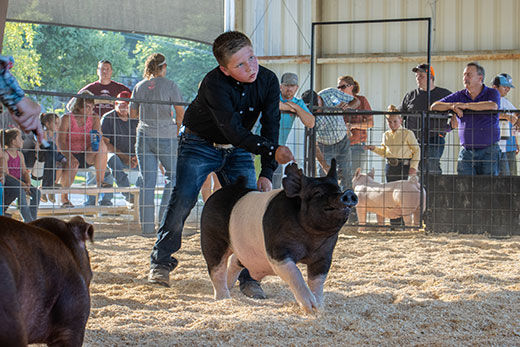It’s county fair season in Kansas, and while local events are a great way to enjoy the sun and time with friends, heat can be an invisible fun bandit for livestock.
Kansas State University beef extension veterinarian Dr. A.J. Tarpoff said it’s important for youth showing livestock to watch animals closely and know the symptoms of heat stress.
All animals—as well as people—can experience heat stress, which occurs when the body cannot get rid of excessive heat, either through sweating or other means.
Tarpoff said cattle handle heat differently than other animals. In particular, they struggle with the ability to sweat, which makes them reliant on getting rid of heat through their respiratory system, such as breathing the heat out. To preserve energy, they usually dissipate the heat during the night when it’s cooler.
“It takes 4 to 6 hours to return cattle to regular temperature,” Tarpoff said.
He added that one way to tell if a show steer or heifer is affected by heat stress is to look for unusual behavior from that animal. Symptoms may include reduced feed intake, increased time standing and crowding around water. In the show barn, animals may also display an increase in breathing rate.
One way to keep animals cool is to make sure barns get plenty of ventilation. Tarpoff said that heat stress mitigation strategies should be planned with cattle comfort in mind, and each strategy will be unique to the housing situation. Other factors to consider include whether the animal has its winter or summer hair coat; hair color; and past health issues.
Tarpoff said youth should consider reducing animal handling during heat intervals.
“Weighing, processing, sampling and shipping cattle are all necessary tasks but they should be strategically conducted during the very early morning hours to ensure cattle comfort,” Tarpoff said.
Another way to avoid heat stress is to provide plenty of water to cattle. Tarpoff said the amount of water cattle need doubles as the heat increases from 70 to 90 degrees Fahrenheit.
Tarpoff also encourages youth to consider moisture levels from the washing areas. Some locations can artificially increase the humidity and cause unneeded stress on livestock.
“Monitoring conditions and preparing for heat stress is a must when caring for your animals,” he said.




